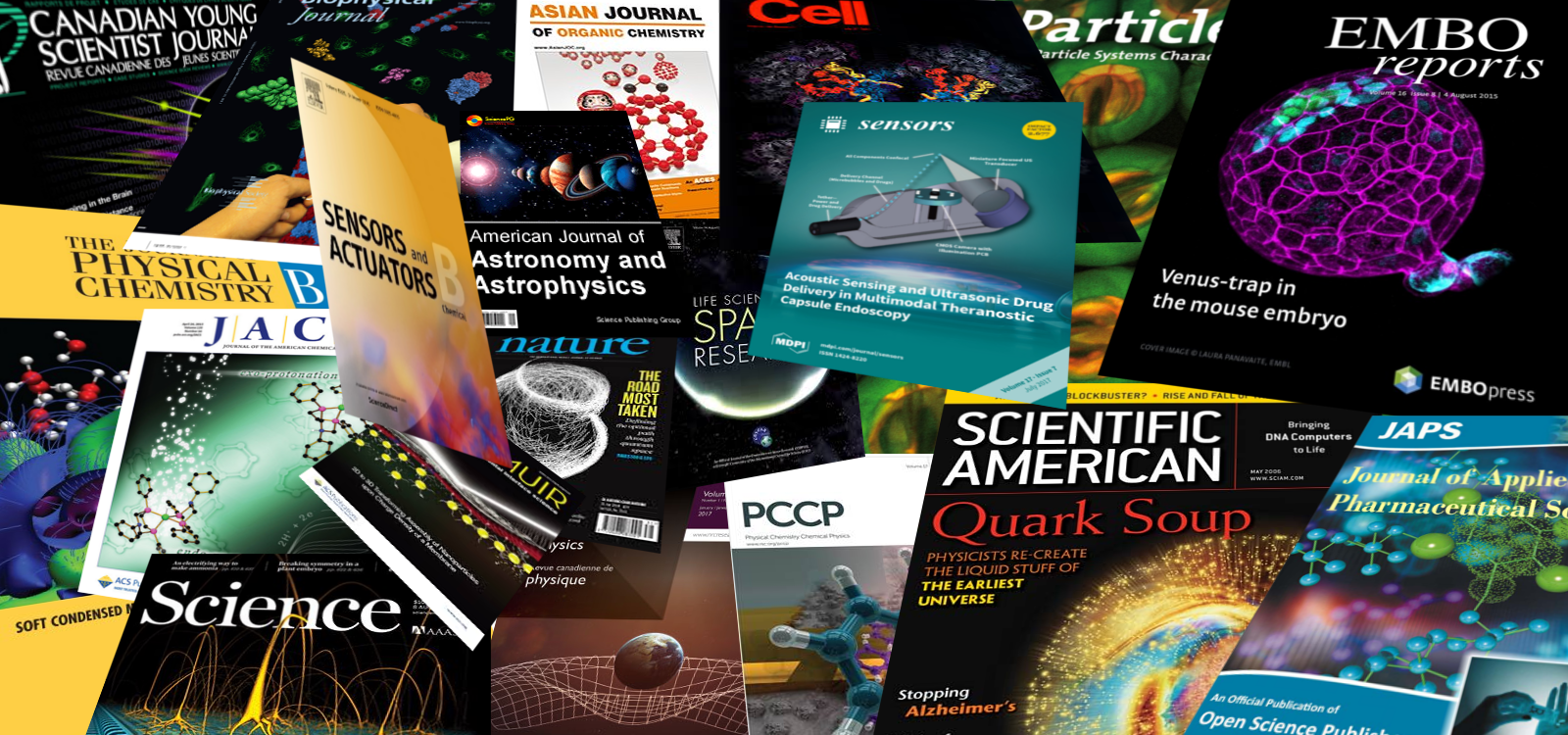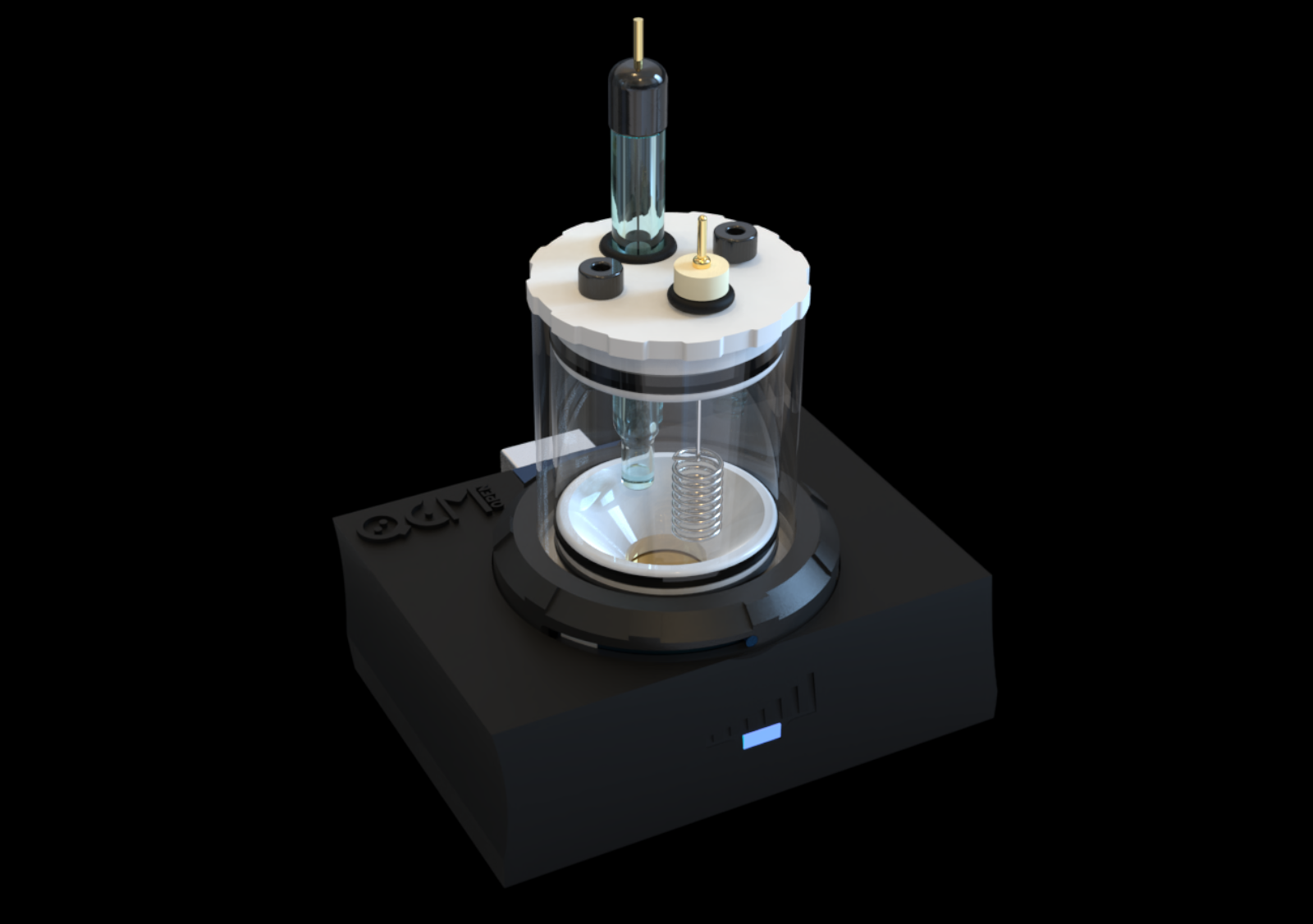openQCM – Powered by Novaetech S.r.l

Scientific Papers
Publications citing the applications of openQCM (by Novaetech S.r.l.) instruments and accessories in scientific research.
The list of scientific papers published on the most important journals showing the usage of openQCM in several scientific fields, such as thin film deposition, chemical sensors, biological research and biosensors.
Because of the large number of publications, we are reorganizing everything by subject areas. This will take some time. Thank you for your patience
2025
Bradley, Zoe; Bhalla, Nikhil
Plasmonic Geometry-Induced Viscoelastic Biocomplex Formation with Optical Concealment, Liquid Slips, and Soundscapes in Bioassays Journal Article
In: Analytical Chemistry, vol. 0, no. 0, pp. null, 2025, (PMID: 40131300).
Abstract | Links | BibTeX | Tags: Liquids, Mathematical methods, Metal nanoparticles, openQCM NEXT, Peptides and proteins, QCM-D, sensors
@article{doi:10.1021/acs.analchem.4c04859,
title = {Plasmonic Geometry-Induced Viscoelastic Biocomplex Formation with Optical Concealment, Liquid Slips, and Soundscapes in Bioassays},
author = {Zoe Bradley and Nikhil Bhalla},
url = {https://doi.org/10.1021/acs.analchem.4c04859},
doi = {10.1021/acs.analchem.4c04859},
year = {2025},
date = {2025-03-25},
journal = {Analytical Chemistry},
volume = {0},
number = {0},
pages = {null},
abstract = {Plasmonic nanoparticles (NPs), typically made up of gold or silver, are widely used in point-of-care bio- and chemical sensing due to their role in enhancing detection sensitivity. Key NP properties influencing sensing performance include the material type, NP size, and geometry. While much research has focused on material and size optimization, less attention has been given to understand NP geometry effects and interactions with biomolecules involved in the bioassay. In this context, we investigate the interfacial properties of the biocomplex formed by spherical-shaped gold nanoparticles (AuNPs) and gold nanostars (AuNSts) during a sandwich assay using localized surface plasmon resonance (LSPR) and quartz crystal microbalance with dissipation (QCM-D). The chosen model to study the biocomplex specifically detects interleukin-6 (IL-6). Our results show that AuNSts, with their anisotropic shape and higher surface area, form antibody–antigen complexes more effectively than AuNPs. AuNSts also create a softer, more hydrated layer due to their complex geometry, which leads to larger liquid slips. Lastly, we showed that AuNSts avoid optical concealment at high IL-6 concentrations, unlike AuNPs, making them more reliable for detecting a wider range of concentrations. These findings highlight the importance of optimizing NP geometry for improved bio/chemical sensor performance.},
note = {PMID: 40131300},
keywords = {Liquids, Mathematical methods, Metal nanoparticles, openQCM NEXT, Peptides and proteins, QCM-D, sensors},
pubstate = {published},
tppubtype = {article}
}
Plasmonic nanoparticles (NPs), typically made up of gold or silver, are widely used in point-of-care bio- and chemical sensing due to their role in enhancing detection sensitivity. Key NP properties influencing sensing performance include the material type, NP size, and geometry. While much research has focused on material and size optimization, less attention has been given to understand NP geometry effects and interactions with biomolecules involved in the bioassay. In this context, we investigate the interfacial properties of the biocomplex formed by spherical-shaped gold nanoparticles (AuNPs) and gold nanostars (AuNSts) during a sandwich assay using localized surface plasmon resonance (LSPR) and quartz crystal microbalance with dissipation (QCM-D). The chosen model to study the biocomplex specifically detects interleukin-6 (IL-6). Our results show that AuNSts, with their anisotropic shape and higher surface area, form antibody–antigen complexes more effectively than AuNPs. AuNSts also create a softer, more hydrated layer due to their complex geometry, which leads to larger liquid slips. Lastly, we showed that AuNSts avoid optical concealment at high IL-6 concentrations, unlike AuNPs, making them more reliable for detecting a wider range of concentrations. These findings highlight the importance of optimizing NP geometry for improved bio/chemical sensor performance.
Dias, Isabela P.; Cunha, Regiane Stafim; Masaki, Ryu; Bom, Maritza A. Todo; Ramos, Edneia A. S.; Santos, Giovanna J. V. P.; Furman, Giovanna; Lucena, Julia T.; Jiacomini, Isabella G.; Lo, Sze M.; Schemczssen-Graeff, Zelinda; Beirão, Breno C. B.; Zanata, Silvio M.; de L. Faria, Luiz M.; Gerhardt, Edileusa M.; Souza, Emanuel Maltempi; Müller-Santos, Marcelo; Picheth, Guilherme F.
Controlling Protein Immobilization over Poly(3-hydroxybutyrate) Microparticles Using Substrate Binding Domain from PHA Depolymerase Journal Article
In: Biomacromolecules, 2025, (PMID: 40059311).
Abstract | Links | BibTeX | Tags: Immobilization, Ligands, Microparticles, openQCM Shield, Peptides and proteins, QCM, Quartz Crystal Microbalance, Toxicity
@article{doi:10.1021/acs.biomac.5c00010,
title = {Controlling Protein Immobilization over Poly(3-hydroxybutyrate) Microparticles Using Substrate Binding Domain from PHA Depolymerase},
author = {Isabela P. Dias and Regiane Stafim Cunha and Ryu Masaki and Maritza A. Todo Bom and Edneia A. S. Ramos and Giovanna J. V. P. Santos and Giovanna Furman and Julia T. Lucena and Isabella G. Jiacomini and Sze M. Lo and Zelinda Schemczssen-Graeff and Breno C. B. Beirão and Silvio M. Zanata and Luiz M. de L. Faria and Edileusa M. Gerhardt and Emanuel Maltempi Souza and Marcelo Müller-Santos and Guilherme F. Picheth},
url = {https://doi.org/10.1021/acs.biomac.5c00010},
doi = {10.1021/acs.biomac.5c00010},
year = {2025},
date = {2025-03-09},
urldate = {2025-03-09},
journal = {Biomacromolecules},
abstract = {Biointerface decoration with ligands is a crucial requirement to modulate biodistribution, increase half-life, and provide navigation control for targeted micro- or nanostructured systems. To better control the process of ligand functionalization over three-dimensional (3D) polyester surfaces, we report the characterization of hybrid proteins developed to enhance the anchoring efficiency over polymeric surfaces and preserve optimal spatial orientation: sfGFP, mRFP1, and the RBD proteins were attached to a polyester substrate binding domain (SBD) formed by the C-terminus region of PHA depolymerase. The binding ability was evaluated over poly(3-hydroxybutyrate) (PHB) microparticles (MP) and two-dimensional (2D) surfaces. The PHB interfaces revealed a high affinity toward the proteins linked with SBD, displaying higher protein contents compared to untagged proteins. The MP decorated with RBD-SBD exhibited limited MRC5 internalization and cytotoxicity without a significant impact caused by the RBD protein, suggesting that the system might be adapted for targeted drug delivery and vaccine applications.},
note = {PMID: 40059311},
keywords = {Immobilization, Ligands, Microparticles, openQCM Shield, Peptides and proteins, QCM, Quartz Crystal Microbalance, Toxicity},
pubstate = {published},
tppubtype = {article}
}
Biointerface decoration with ligands is a crucial requirement to modulate biodistribution, increase half-life, and provide navigation control for targeted micro- or nanostructured systems. To better control the process of ligand functionalization over three-dimensional (3D) polyester surfaces, we report the characterization of hybrid proteins developed to enhance the anchoring efficiency over polymeric surfaces and preserve optimal spatial orientation: sfGFP, mRFP1, and the RBD proteins were attached to a polyester substrate binding domain (SBD) formed by the C-terminus region of PHA depolymerase. The binding ability was evaluated over poly(3-hydroxybutyrate) (PHB) microparticles (MP) and two-dimensional (2D) surfaces. The PHB interfaces revealed a high affinity toward the proteins linked with SBD, displaying higher protein contents compared to untagged proteins. The MP decorated with RBD-SBD exhibited limited MRC5 internalization and cytotoxicity without a significant impact caused by the RBD protein, suggesting that the system might be adapted for targeted drug delivery and vaccine applications.

